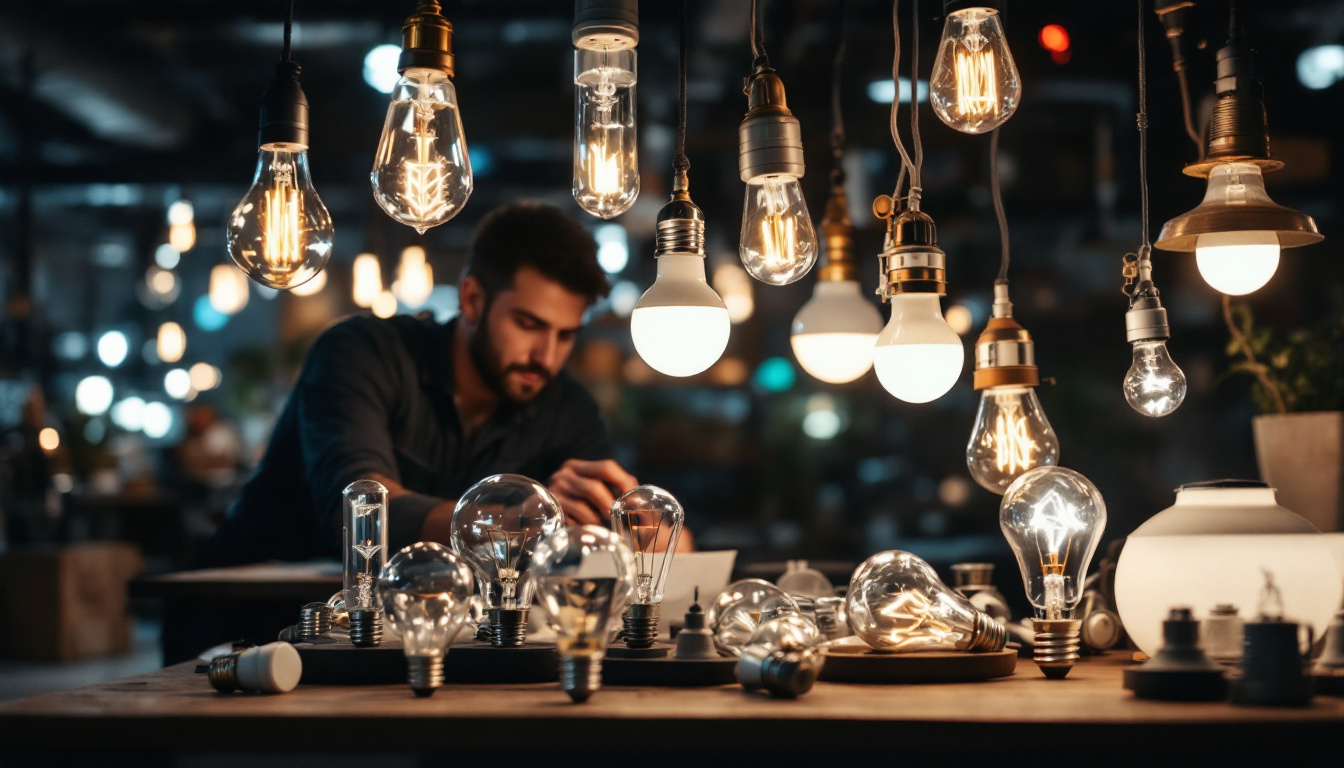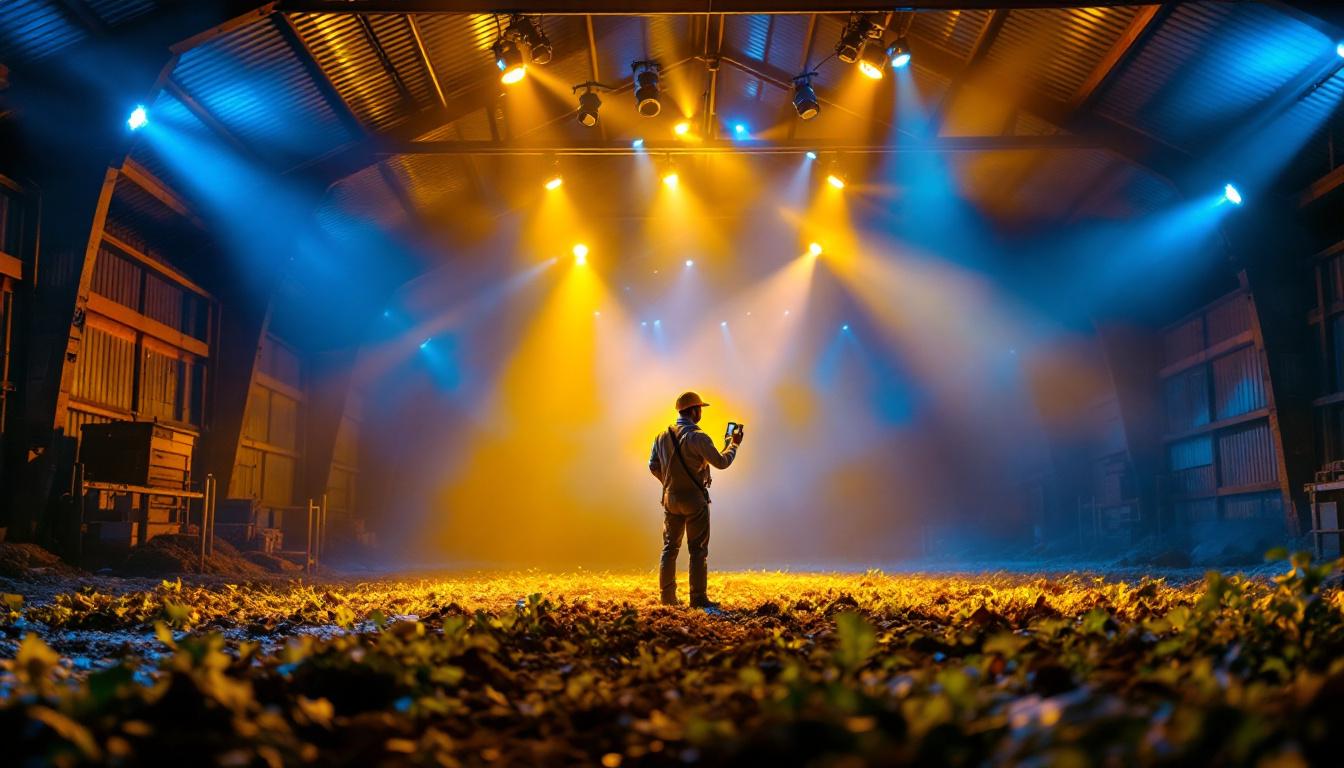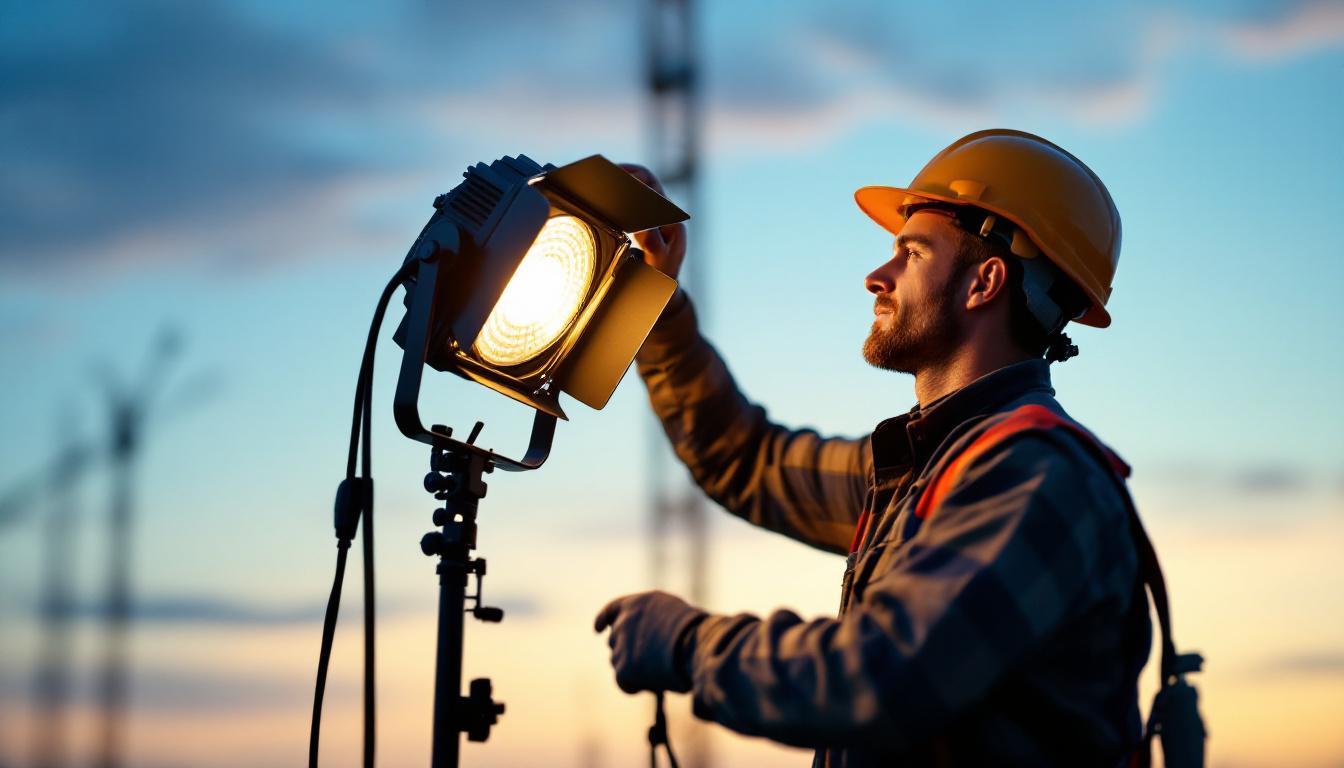
Lighting contractors face numerous challenges in their line of work, from managing budgets to meeting client expectations. One often-overlooked aspect that can significantly impact both efficiency and costs is the choice of light bulbs. This article delves into the various styles of light bulbs available today and how understanding these options can lead to substantial savings in time and money for lighting contractors.
Light bulbs come in a variety of styles, each with its unique characteristics, advantages, and applications. Familiarity with these different types is crucial for lighting contractors, as it allows them to make informed decisions that align with their clients’ needs and project specifications.
Incandescent bulbs are the traditional light source that most people are familiar with. They work by passing electricity through a filament, which then heats up and emits light. While they offer a warm glow and excellent color rendering, their energy efficiency is notably low compared to modern alternatives.
One of the main advantages of incandescent bulbs is their affordability and ease of availability. However, their shorter lifespan and higher energy consumption can lead to increased costs over time, making them less favorable for large-scale projects. Furthermore, the warm light produced by incandescent bulbs is often preferred in residential settings, creating a cozy atmosphere that many homeowners seek. This aesthetic appeal can sometimes outweigh the practical considerations of energy savings, leading to a continued demand for incandescent lighting in specific applications.
Compact fluorescent lamps represent a significant advancement in lighting technology. They use a gas-filled tube to produce light, making them more energy-efficient than incandescent bulbs. CFLs can last up to ten times longer and consume about 75% less energy.
For lighting contractors, the transition to CFLs can mean reduced replacement frequency and lower energy bills for clients. However, it is essential to note that CFLs contain small amounts of mercury, which requires careful disposal and can be a concern for some customers. Despite this drawback, many manufacturers have made strides in creating more environmentally friendly options, and the development of CFLs that mimic the warm light of incandescent bulbs has made them a more attractive choice for homeowners. Additionally, the compact size of CFLs allows for greater flexibility in design, enabling creative lighting solutions in tight spaces.
LED technology has revolutionized the lighting industry. LEDs are highly efficient, consuming significantly less energy than both incandescent and CFL bulbs. They also boast an impressive lifespan, often exceeding 25,000 hours, which translates to fewer replacements and lower maintenance costs.
For lighting contractors, the initial investment in LED fixtures may be higher, but the long-term savings on energy and replacement costs can be substantial. Additionally, the versatility of LEDs allows for a wide range of applications, from residential to commercial settings. Their ability to produce various color temperatures and brightness levels makes them suitable for different environments, whether it’s the bright, focused light needed in a workspace or the soft, inviting glow desired in a living room. Moreover, advancements in smart LED technology have introduced features such as dimming capabilities and remote control, further enhancing their appeal and functionality in modern lighting design.
Choosing the right type of light bulb can lead to significant energy savings, which is a crucial consideration for both contractors and clients. Energy-efficient lighting options not only reduce electricity bills but also contribute to a more sustainable environment.
Lighting accounts for a considerable portion of energy consumption in both residential and commercial spaces. By opting for energy-efficient bulbs like CFLs and LEDs, contractors can help clients reduce their carbon footprint while enjoying lower utility costs.
Moreover, many regions offer incentives for using energy-efficient lighting, such as rebates or tax credits. Contractors who are knowledgeable about these programs can provide added value to their clients by guiding them through the process of obtaining these benefits. This not only fosters a sense of trust but also positions contractors as experts in sustainable practices, enhancing their reputation in the industry.
While the upfront cost of energy-efficient bulbs may be higher, the long-term financial benefits are undeniable. The lifespan of LED bulbs, for instance, means fewer replacements and less labor involved in changing out bulbs. This can save contractors valuable time, allowing them to focus on other aspects of their projects.
In addition to labor savings, energy-efficient lighting can also lead to reduced HVAC costs. Less energy consumption translates to less heat produced, which can decrease the load on cooling systems, further lowering operational costs. Furthermore, the improved quality of light provided by energy-efficient options can enhance productivity in commercial settings, as well-lit environments are known to boost employee morale and efficiency. This creates a win-win scenario where both the financial and psychological benefits of good lighting converge, making energy-efficient choices even more appealing for clients.
Furthermore, the transition to energy-efficient lighting can also increase property value. Homes and businesses equipped with modern, energy-saving technologies are often more attractive to potential buyers or tenants. This trend is particularly relevant in today’s market, where sustainability is becoming a key factor in real estate decisions. By investing in energy-efficient lighting, property owners not only save on operational costs but also enhance the overall marketability of their spaces, making it a smart investment for the future.
Understanding the specific requirements of a project is essential for selecting the appropriate light bulb. Factors such as the intended use of the space, desired ambiance, and energy efficiency goals all play a role in this decision-making process.
Different environments call for different lighting solutions. For instance, residential spaces may benefit from the warm glow of incandescent or LED bulbs, while commercial settings may require the brightness and efficiency of LEDs or CFLs.
In addition, specialized applications like track lighting, recessed lighting, or outdoor lighting may necessitate specific bulb types. Contractors should be well-versed in the various options available to ensure they recommend the best fit for each unique situation. For example, outdoor lighting often requires bulbs that can withstand varying weather conditions, such as moisture and temperature fluctuations. This might lead to the selection of weatherproof LED fixtures that not only provide illumination but also enhance the security and aesthetic appeal of outdoor spaces.
Understanding client preferences is equally important. Some clients may prioritize energy efficiency, while others may focus on aesthetics or budget constraints. A contractor’s ability to balance these factors can lead to higher client satisfaction and repeat business.
Engaging clients in discussions about their lighting needs can also help contractors identify opportunities to suggest more efficient or suitable options that they may not have initially considered. For instance, a client might be unaware of the long-term savings associated with LED bulbs, which, despite a higher upfront cost, can significantly reduce energy bills over time. Additionally, discussing color temperature can help clients achieve their desired mood; warmer tones can create a cozy atmosphere in living spaces, while cooler tones may be more appropriate for work environments, enhancing focus and productivity.
The lighting industry is continuously evolving, with new technologies emerging that can further enhance efficiency and functionality. Staying informed about these trends is vital for lighting contractors looking to remain competitive in the market.
Smart lighting technology has gained popularity in recent years, allowing users to control their lighting through smartphones or voice-activated devices. These systems can optimize energy usage by enabling users to adjust brightness levels or set schedules.
For contractors, incorporating smart lighting solutions into projects can provide added value and appeal to tech-savvy clients. Understanding the installation and integration of these systems can set contractors apart in a crowded marketplace. Furthermore, the integration of smart lighting with home automation systems can create a seamless user experience, where lighting interacts with security systems, HVAC, and even entertainment setups. This interconnectedness not only enhances convenience but also promotes energy efficiency, making it an attractive selling point for modern homes and businesses.
LED technology continues to advance, with new developments improving efficiency, color accuracy, and versatility. Innovations such as tunable white LEDs allow users to adjust the color temperature according to their preferences or time of day, enhancing the overall lighting experience.
Contractors who stay updated on these advancements can offer clients the latest solutions, ensuring they benefit from the best available technology. Additionally, the emergence of OLED (Organic Light Emitting Diodes) technology is revolutionizing the design possibilities for lighting fixtures. OLEDs are thinner and more flexible than traditional LEDs, allowing for creative applications such as wall panels and even illuminated furniture. This opens up new avenues for contractors to explore unique designs that can elevate a space’s aesthetic appeal while maintaining energy efficiency.
In conclusion, understanding the different styles of light bulbs and their respective advantages can save lighting contractors both time and money. By selecting the appropriate bulbs for each project, contractors can enhance energy efficiency, reduce maintenance costs, and ultimately improve client satisfaction.
As the lighting industry continues to evolve, staying informed about new technologies and trends will further empower contractors to make informed decisions. By prioritizing energy-efficient solutions and understanding client needs, lighting contractors can position themselves as trusted experts in their field, paving the way for future success.
Ready to enhance your lighting projects while maximizing cost efficiency? Look no further than LumenWholesale for all your lighting needs. Our extensive selection of spec-grade lighting products is designed to meet the highest industry standards, ensuring you deliver reliable and high-performance lighting solutions to your clients. With unbeatable wholesale prices and the convenience of free shipping on bulk orders, you can trust LumenWholesale to provide premium lighting without the premium price tag. Make the smart choice for your business and explore our collection for the best value in wholesale lighting today.

Discover why lighting contractors should prioritize outdoor lighting projects.

Discover the essential insights into standard bulb bases that every lighting contractor should master.

Discover how LED barn lighting can boost your contract wins with energy savings, durability, and superior illumination.

Discover essential tips and strategies for lighting contractors to effectively master jobsite lighting.